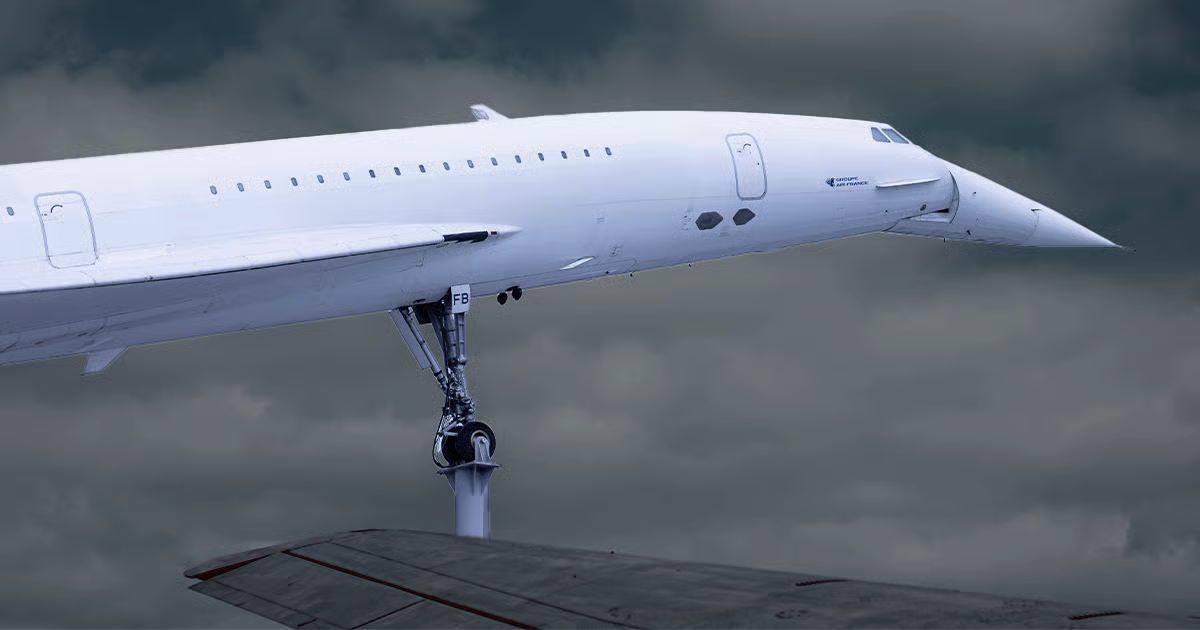Introduction
The easy path goes nowhere good
Yet we keep taking it anyway — picking convenience over resilience, fast fixes over tough grit, and short-term wins over real progress. The cost? A creeping decay of the capabilities that propel us forward as a society.
Enter Per Aspera. We’re a new research group and media brand for people and organizations engaged in ‘hard pursuits’—the tough, complex work that advances civilization.
We’re here because society’s biggest challenges need more than lone geniuses—they need a team, a culture, and a playbook. Our goal is to build a movement that doesn’t just identify hard problems but helps transform them into solutions that matter.
Are you developing spacecraft that will push humanity beyond Earth, creating energy systems resilient against any crisis, revitalizing industries critical to our sovereignty, or standing at the edge wondering how to contribute to this renaissance?
Whether you’re already deep in these fields or searching for your entry point, this movement needs your unique perspective. Consider this your invitation to join a vanguard of builders who understand what history has always shown: the stars are only reached through hardship.
This Manifesto lays out why these hard pursuits matter, what’s in the way, and how we beat it. We’re not here to just cheer from the sidelines—our goal is to accelerate (speed up progress) and persist (turn fragile momentum into lasting, durable change).
Section 001
‘Hard Pursuits’ fuel our core drives.
Deep down, we all yearn to explore, prosper, feel secure, and embrace the new. These aren’t vague notions—they’re the instincts that steer us in our personal lives and shape the world that we build.
- Exploration’s in our blood—it’s not just spacefarers, it’s treks through wild lands and our global $10 trillion tourism engine.
- Our drive for prosperity has uprooted 3 billion since the ’50s, leaving behind ancestral villages for city lights and new borders.
- Security pushes us to guard what matters—from installing home security systems to patenting our ideas and insuring our most precious possessions.
- And a craving for dynamism—a pull toward the new — is why we chase cutting-edge tools, bold cuisines, and avant-garde aesthetics.
Yet we seldom notice the backbone behind it all—the ‘hard pursuits’ working quietly out of sight and behind the scenes.
- Exploration requires accessible, abundant mobility, which demands relentless engineering—to produce ships that conquer oceans, fast planes that shred distance,and rockets that punch into space, and spaceships that enable interplanetary exploration and off-world commerce.
- Prosperity is built on the back of brutally tough infrastructure—energy plants that never quit, networks that bind the globe, and supply chains that don’t (or shouldn’t) snap under pressure.
- Security requires tireless vigilance—code that traps thieves, critical infrastructure that defies collapse, and tools that outpace what the world’s worst actors can throw at us.
- And dynamism demands raw creation—new ideas that upend the old, tech that rewrites physical limitations, and narratives that pull us towards something bigger.
From the start, and damn sure now, these ‘hard pursuits’—challenging, complex, and often thankless work—have helped turn our core desires into reality.
Section 002
‘Hard Pursuits’, neglect, & decay.
Decades back, we dumped ‘hard pursuits’ for the seduction of easy profits and financial engineering. Wall Street embraced complex financial productization, while corporations leveraged labor arbitrage through globalization, exporting millions of U.S. jobs to China between 2001 and 2017. We embraced a dangerous delusion that America could thrive as merely a designer and marketer nation.
We took the ‘meat out of the sandwich’ — keeping design and marketing but outsourcing the actual building, the fabrication process, and the supply chain that connects them. This separation fatally undermined our industrial capabilities.
To create a superior product, you cannot isolate yourself from the build process and the fabrication process. If you do that, you lose the insight into the subtleties of lifetime, of speed, temperature control. You end up with products that are substandard. America learned over centuries how to process and alloy metals with precision, only to outsource that knowledge and capability in pursuit of quarterly profits.
– Dan Goldin

This shift led to increasingly efficient corporate and national output on one hand, but ‘hard pursuits’ left on autopilot on the other. These strategies may have boosted quarterly earnings, but they siphoned talent and capital from the fundamental innovations that build civilizations.
The result isn’t merely stagnation—it’s active regression. To wit, consider the evidence:
Flight: It’s ironic that in 1947, Chuck Yeager, an American war hero from World War II, broke the sound barrier in a Bell X-1 designed in the mid-40s. Juxtapose that to the fact that Boeing 707s designed in the 1950s flew at 600 mph. Yet today’s latest commercial jets cruise at 560 mph. The Concorde flew at Mach ~2.0 in the 1970s and until 2003, yet despite multiple attempts, America hasn’t been able to revive supersonic flight. We’ve regressed.
Making matters worse, the timeline for aircraft development has stretched dramatically. What once took a few years now takes a decade, with costs ballooning into the billions. The SR-71 took a few years from program start to first flight (1962-1964) and became operational in 1966, with a radical new design that utilized titanium instead of aluminum for the first time in history, had glass windows that operated at 760° F, and featured a brand new engine that had never been flown before.
Meanwhile, the B-21 Raider, which shares design principles with the B-2 that had been flying for decades, took eight years from authority to proceed to first flight in November 2023, and may not yet be fully operational even in 2025.
We’ve been trapped in progress in subsonic, supersonic, and hypersonic flight. I had my NASA team fly an air breathing scramjet at Mach 9.68 in 2003. That still holds the record as documented in the Guinness Book of World Records. And it cost a fraction of a billion dollars to develop.
– Dan Goldin
Space: Apollo 17 departed the moon in December 1972. Since then, no human has traveled past low Earth orbit. The contrast between past and present space ambitions is stark—we went from President Kennedy’s seemingly impossible vision to lunar landing in just over eight years during the 1960s. Yet despite billions of dollars and years of development, we have no U.S. astronauts back on the moon, on Mars, or mining asteroids.
Meanwhile, the International Space Station is reaching the end of its planned 25-year lifespan this December. The ISS began continuous human habitation on November 2, 2000, with the arrival of the Expedition One crew. Since then, the station has been continuously inhabited, marking the longest consecutive human presence in Earth orbit in history. Yet we approach the end of the ISS with no comprehensive plan for what comes next.
Mobility: Los Angeles commuters now waste 40 more hours in traffic annually than they did in 1982. Despite a century of automotive innovation, average urban speeds have actually decreased—Manhattan traffic moved at 11.5 mph in the 1920s, yet crawls at just 7-8 mph today during business hours.
We’ve failed to advance meaningfully beyond public transit technologies pioneered in the early 20th century: the subway systems of New York and Boston have seen only limited expansion in recent decades. Our conventional Amtrak network has average speeds of 50-80 mph (with only the Northeast Corridor Acela reaching higher speeds in limited segments), while China has built over 25,000 miles of high-speed rail—with average speeds of 150-220 mph—in less than two decades.
Hyperloop concepts that promised 700 mph ground transportation remain largely theoretical after a decade of development, with only limited test tracks constructed and no operational commercial systems.
Meanwhile, financial and environmental costs mount: traffic congestion costs the U.S. economy between $150-190 billion annually in lost productivity and wasted fuel.
Energy: Blackouts have climbed 67% since 2000, while average retail electricity prices roughly doubled over the same stretch. Our grid, designed for a different era, now faces loads it was never engineered to handle—leaving us increasingly exposed as computing, AI, and electrification dramatically increase power demands.
The vulnerabilities are systemic—from extreme weather to potential EMP attacks—yet modernization efforts remain sluggish. We’re faced with a troubling paradox: renewable generation costs have plummeted (solar down 90% since 2010), but these savings vanish because transmission and grid infrastructure costs climb 5-7% annually in many regions. While global competitors pursue next-generation nuclear and fusion at scale, the U.S. regulatory path remains prohibitively lengthy (though we see promising signs that the red tape is being rolled back here).
The last major U.S. grid overhaul was in the 1970s, with current renewal rates suggesting a complete modernization would take over 50 years—assuming we started today. This is why we’re so bullish on new paradigms—distributed energy resources, advanced storage solutions, and microgrids that can bypass our calcified infrastructure entirely.
And the list goes on…
- Medicine: Antibiotic discovery has slowed, with only two new classes introduced since 2000. Major new discoveries in stem cell and gene editing have not yet yielded the promised hope after initial discoveries. The development of new antiviral drugs is dangerously slow compared with the speed of spreading global viral threats.
- Infrastructure: Japan and China operate thousands of miles of high-speed rail while America has yet to complete a single line. Our bridges, tunnels, and roadways—once the envy of the world—now receive failing grades from engineering associations, with rehabilitation costs rising annually.
- Air Traffic Management: Our system was established around 1935 and hasn’t fundamentally changed since. We still rely on thousands of human controllers using outdated technology to manage increasingly crowded skies, creating bottlenecks, delays, and preventable safety risks.
- The arts: Even in music, full bodies of work as albums have declined from a significant role to <10% of total music output. The instant gratification economy has reached creative pursuits, fragmenting attention and prioritizing quick hits over sustained masterworks.

These examples aren’t just historical footnotes—they represent missed opportunities that compound over time. Each regression creates cascading challenges for society and increases the gap we must overcome.
Today, we see signs of renewed interest and promising progress in tackling these many hard challenges facing us. But a critical question remains: do we have enough people with the right skills and intestinal fortitude to meet the moment?
Because ‘hard pursuits’ don’t just face a challenge of will or capital—they face a breadth and depth problem.
Section 003
‘Hard Pursuits’ face a breadth problem.
A revival is brewing—reusable spacecraft, micro-reactors, factory homes, drones, autonomous cars and planes, “strong” AI, supersonic and hypersonic passenger flight, revived dire wolves, and the like. We’re living in a time of wonders.
Call it deep tech’s comeback. We call it the deep tech renaissance—not because it’s flashy, but because it’s real. Except it’s not guaranteed.
Progress in these “hard pursuits” hangs by a thread—unevenly distributed, brittle, ready to snap. And the choke point isn’t just cash or supply chains—it’s people. No amount of funding or industrial policy papers over that.
At its core, this vulnerability stems from a fractured industrial ecosystem. For decades, we’ve dismantled the integrated chain of American innovation—separating design from production, engineering from manufacturing, conception from execution. This isn’t merely about outsourcing; it’s about severing the vital connections that make technological mastery possible.
True technological sovereignty requires control over the entire value chain. When companies lose command of their fabrication processes and supply networks, they forfeit more than just production capacity—they lose the embodied knowledge, the technical intuition, and the problem-solving capabilities that come from seeing a product through from concept to reality. Without this end-to-end capability, our national resilience weakens and innovation falters.
Consider this: books from the late 1940s taught American schoolchildren about the nation’s unique advantages—America had all the natural resources and the ability to take raw materials and convert them into all the materials needed to build modern machinery. What applied to America in the 40s now seems like a distant memory, as we’ve allowed that integrated capability to fragment and erode.
Spaceflight, energy, housing, security, creation—these things require real work and breakthroughs, not just whiteboard sketches. And those breakthroughs need to be turned into processes and scaled into systems that work: materials mined, parts forged, power delivered, data processed.
The manufacturing challenge is particularly acute. America depends on roughly 20,000 small and medium-sized machine shops, and 70% of the skilled manufacturing workers are over 45 years old. The shops are typically owned and run by members of the Boomer generation now thinking of retirement. Who’s going to take ownership of these shops? What’s the succession plan? In many cases, there isn’t one.
Technology can help, but it’s not a silver bullet. New manufacturing techniques, automation, and robotics are powerful tools, but for at least the next few decades, they can’t replace the fundamental need for human expertise and industrial integration. And even our newest manufacturing technologies face limitations—additive manufacturing, for example, cannot handle the very large parts needed for ships, buildings, and steel girders.
This requires a workforce, not just a few lone-wolf geniuses. And by 2030, we’re staring down a gap that could stall all progress…

The Gap we’re facing by 2030:
- 20,000+ scientists in materials science, biotech, nanotechnology, and AI
- 221,000 mining professionals
- 2.1 million manufacturing workers
- 67,000 semiconductor manufacturing roles
These aren’t just random statistics—they’re the baseline we need to keep this moving. Ignore them, and the whole thing grinds down.
So, while a renaissance has indeed begun, its success depends on expanding far beyond a concentrated technical elite. An elite tech clique across a handful of zip codes cannot pull this off alone. The movement must grow broader, or it fails.
The good news: a new generation of entrepreneurs and builders has emerged, working to restore the complete sandwich of American production. This can be seen with the trail-blazing work being done by the New American Industrial Alliance (NAIA).
Under the leadership of visionaries like Austin Bishop, Aaron Slodov, Julius Kren, and Chris Power, NAIA members like Divergent Technologies, Atomic Industries, and Hadrian are rebuilding the vital middle layer—the actual making of things.
From bringing AI-driven precision to manufacturing processes, to revolutionizing tool and die work, to reconnecting design with production, these organizations are helping restore America’s end-to-end capabilities. These pioneers understand that without the meat in the sandwich—the fabrication expertise and supply chain control—no amount of innovative design or marketing can yield technological sovereignty.
Section 004
‘Hard Pursuits’ face a depth problem.
We’re already staring down a talent shortage. Worse still, we’re losing the playbook.
In recent years, we’ve suffered from a silent erosion of institutional knowledge—decades of hard-won wisdom has been trapped in silos or lost as veterans retire, leaving those tackling today’s hardest problems with a fragmented foundation. (For more on this, stay tuned for our upcoming Anti-memo on Tribal Knowledge.)
We’re living in the midst of a historic shift — where ‘hard pursuits’ once exclusive to nation-states are now being taken on by private companies and individuals. They need specific skillsets, process knowledge, and technical know-how to succeed.
Lessons learned from past de-risking efforts remain largely inaccessible, kept either intentionally under lock-and-key or inadvertently trapped within institutional siloes.
Don’t get us wrong — necessity is the mother of innovation. Companies like SpaceX have built largely from scratch and worked around these constraints. Lacking access to knowledge amassed by agencies over decades, SpaceX still was able to achieve vertical landings and routine rocket booster reuse.
However, many taking on hard pursuits do not have the same timeline or capitalization abilities as SpaceX to prove that they can succeed. They are often forced to rediscover a known tech tree, reinventing what’s already been discovered and burning time and cash they don’t have.
The cost of pressing pause on ‘hard pursuits’ (and partially offshoring them) in recent decades was a significant erosion of tribal knowledge, made more acute by the ongoing retirement of professionals who were last involved before these efforts were halted. For example…
- The U.S. Coast Guard’s 24-year hiatus in heavy icebreaker construction led to shipyard closures, engineering expertise atrophy, and industrial base erosion, severely hampering our current efforts to revitalize the polar fleet.
- The semiconductor industry offers perhaps the starkest illustration of our broken innovation chain. In the 1990s, we made a Faustian bargain—trading long-term technological sovereignty for short-term financial optimization and a bear hug of the “fabless” manufacturing model. We outsourced the physical creation of our designs to Taiwan and South Korea.
- With each passing year, the knowledge gap widened as expertise in advanced fabrication processes—the very soul of semiconductor innovation—migrated overseas. This wasn’t merely offshoring production; it was surrendering the crown jewels of American technological leadership.
- Today, as we belatedly restrict advanced chip sales to potential adversaries, we’re confronted with the hollowness of our position: attempting to control technologies we can no longer produce ourselves. The barn door stands open, the horse long gone.

The funny thing about ‘hard pursuits’ is that they are truly hard – they are endeavors that create step changes in capabilities, rather than incremental progress, often times at great risk and little certainty of success.
We aren’t merely building machines and systems; we’re rebuilding America’s capacity to define its own destiny. Every process we master, every skill we advance, every capability we restore represents not a return to the past, but a stepping stone to a more resilient future.
This knowledge crisis demands more than preservation—it demands transformation. We must forge a new covenant between generations: the masters of yesterday’s technologies passing their hard-won wisdom to the pioneers of tomorrow’s breakthroughs. This isn’t nostalgia—it’s practical recognition that certain fundamentals remain constant even as applications evolve.
The depth problem is solvable, but not through passive means. It requires sustained, deliberate action: veterans documenting their insights, corporations investing in apprenticeships rather than quarterly returns, and educational institutions that value making as much as theorizing. Technology alone won’t save us—AI can assist, but it cannot replace the intuitive understanding that comes from hands-on mastery.
The nations that build this depth will lead the next century. Those that don’t will follow, dependent and diminished. But we refuse to accept decline as inevitable. Per Aspera intends to capture and scale critical knowledge, champion technical mastery as a high-status pursuit, and rebuild the operational depth that underpins true sovereignty. The future is winnable—but only if we take on the hard pursuits headfirst and do the work.
Section 005
Breadth and depth require people, who require culture and community.
History won’t remember our white papers or our policy debates. It will remember one thing: did we rise to meet this moment?
America still bends steel and silicon into marvels. Our engineers and builders continue to defy gravity, harness atoms, and reshape matter. For all our handwringing, we remain a nation of extraordinary capability. But these sparks of brilliance now flicker within a darkening landscape of lost knowledge and outsourced expertise.
This isn’t just about widgets and supply chains. It is existential. Either we control our technological destiny or someone else will. Either we master the complete cycle of innovation—from raw materials to finished products—or we become dependent vassals in a world we no longer shape.
The time for half-measures is over. We need a complete revolution in how we think about building, making, and doing. The future demands an America that doesn’t just design and market, but forges and fabricates; an America that doesn’t just theorize, but tests and deploys; an America that doesn’t just consume, but creates.
This renaissance will be powered by people who:
- Understand materials science like they understand computer science
- Master manufacturing techniques as thoroughly as distribution strategies
- Control supply chains as skillfully as they control code
- Build physical things with the same passion they build digital products
The future belongs to those who rebuild our “industrial sandwich” – restoring the vital middle layer of fabrication expertise that connects design genius with market mastery. Without this connective tissue, our technological body cannot stand, much less run.
Can our citizens sleep at night knowing they are secure in their finances, in their homes, in their futures? Not without this fundamental transformation. Not without people willing to get their hands dirty in the physical world of atoms as well as the digital realm of bits.
The stakes couldn’t be higher. We aren’t just racing against market competitors. We’re racing against adversaries who play the long game, who think in decades while we chase quarters. They see manufacturing sovereignty as a strategic weapon. They understand that whoever controls the means of production controls the future.
But here’s the truth that ignites our optimism: the wheel is already turning. Across America, new factories are rising. Veterans are teaching apprentices. Engineers are choosing hardware over software. Entrepreneurs are betting on atoms, not just apps. The tide is shifting beneath our feet.
This is not a spectator sport. This is your call to battle stations:
- MASTER THE FUNDAMENTALS: The physics, the chemistry, the materials, the processes that make everything work. Dive deep into how things are actually made. Become an expert not just in what something does, but how it’s built.
- OWN YOUR SUPPLY CHAIN: Know where your materials come from and who controls them. Build redundancy and resilience. Understand that a chain is only as strong as its weakest link, and too many of our links now stretch across oceans to nations that don’t share our interests.
- REBUILD MANUFACTURING EXCELLENCE: Design and manufacturing must become reintegrated. The insights from the factory floor must feed back into the engineering lab. The distance between concept and creation must shrink from thousands of miles to mere steps.
- REVOLUTIONIZE ENERGY: We need abundant, reliable, affordable power. Without it, all other ambitions falter. Advanced computing, modern manufacturing, and autonomous systems will demand more energy, not less. Pursue fusion, advanced nuclear, grid-scale storage, and breakthrough renewables with relentless determination.
- SECURE THE FOUNDATION: Technical mastery is national security. It’s not abstract. It’s the difference between leading or following, between independence or dependence, between strength or vulnerability in a dangerous world.
At Per Aspera, we’re building the central nervous system for this moment—and this movement. We’ll connect you with the pioneers, the technologies, the methods, and the knowledge that will accelerate your impact. We’ll track the critical changes in supply chains, highlight breakthrough processes, and give you the tools to lead rather than follow.
This isn’t about nostalgia for an industrial past. This is about forging an advanced industrial future—one where America’s technical and manufacturing prowess becomes once again the envy of the world and the foundation of our prosperity and security.
The path ahead is hard. That’s the point. Ad astra per aspera—to the stars through hardships. The easy path has led us to dangerous dependency. The hard path leads back to sovereignty, security, and the deep satisfaction that comes from building things that matter.
As John F. Kennedy once said, we should “not pray for easy lives, but pray to be stronger men [and women].” This isn’t just rhetoric—it’s the fundamental truth that has driven every significant American achievement. From crossing oceans to crossing space, from industrial revolution to digital revolution, our greatest moments have always come when we chose the difficult path.
Today, we face that choice again. Will we continue down the comfortable path of outsourced capabilities and diminished expertise? Or will we summon the courage to rebuild what we’ve lost and forge what we’ve never had?
Per Aspera exists to rally those who have already made their choice—the builders, the makers, the masters of hard things who understand that true progress only comes through difficulty. Join us as we build a movement worthy of our potential and equal to this pivotal moment in history.
The easy path goes nowhere. The hard way is the only way forward. Welcome aboard.
